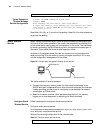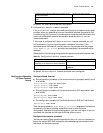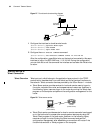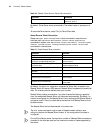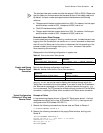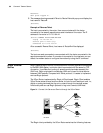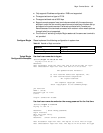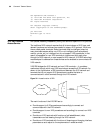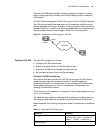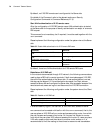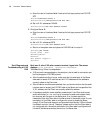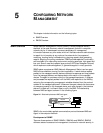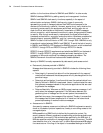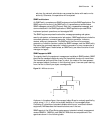
68 CHAPTER 4: TERMINAL SERVICE
SCO OpenServer(TM) Release 5
(C) 1976-1998 The Santa Cruz Operation, Inc.
(C) 1980-1994 Microsoft Corporation.
All rights reserved.
For complete copyright credits,
enter "copyrights" at the command prompt.
you have mail
Terminal type is vt100
#
X.25 PAD Remote
Access Service
PAD (Packet Assembly/Disassembly facility) is a definition specific to X.25 protocol.
The traditional X.25 network requires that all its terminals are of X.25 type, and
relevant hardware and software are needed to support X.25 protocol, which are
the so-called packet terminals. Packet terminals must be intelligent ones, but
many terminals uses are either non-X.25 or not intelligent (such as keyboard,
monitor, printer, etc.) or intelligent but do not support X.25 procedures. In that
case it is impossible for non-X.25 terminals to interconnect with each other
through the X.25 network, or even access the X.25 network. X.25 PAD technology
was developed to address how these devices can be enabled to communicate via
X.25 network.
X.25 PAD bridges the X.25 network and non-X.25 terminals — it provides a
mechanism through which non-X.25 terminals can access the X.25 network. As
shown in the figure below, a PAD is positioned between the X.25 network and
terminals that do not support X.25 procedures to enable the latter to
communicate with other terminals through the X.25 network.
Figure 32 Access function of PAD
The main functions of the X.25 PAD are to:
■ Provide support to X.25 procedures and accordingly to connect and
communicate with the X.25 network.
■ Provide support to non-X.25 procedures and accordingly to connect non-X.25
terminals.
■ Provide non-X.25 terminals with functions of call establishment, data
transmission and call clearing through the X.25 network.
■ Provide non-X.25 terminals with functions of observing and changing interface
parameters so as to adjust to the requirements of varied terminals.
X.25 Network
X.25
Procedures
P
A
D
Non-X.25 terminal
Non-X.25
Procedures



